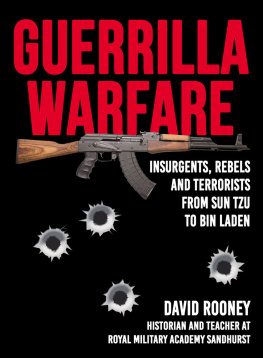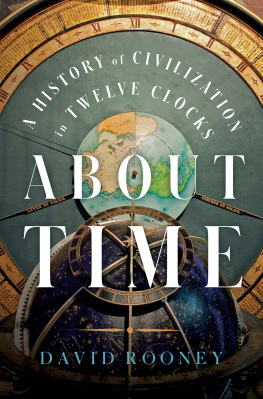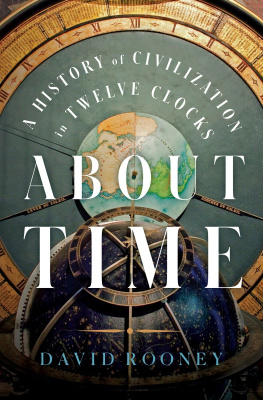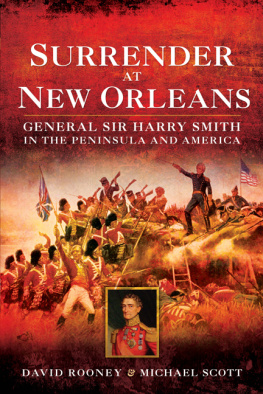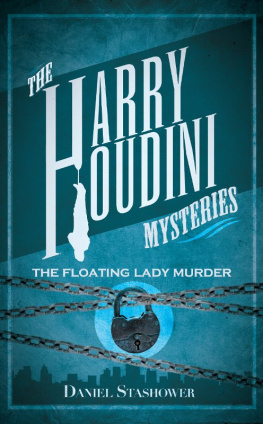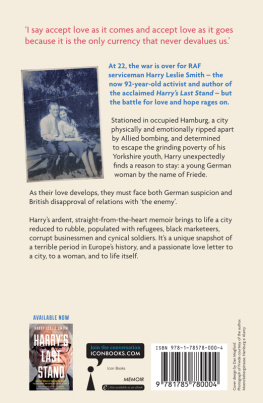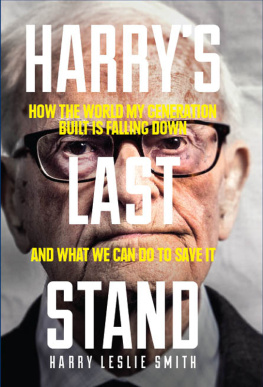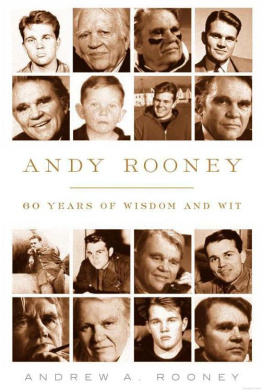First published in Great Britain in 2008 by
Pen & Sword Military
an imprint of
Pen & Sword Books Ltd
47 Church Street
Barnsley
South Yorkshire
S70 2AS
Copyright David Rooney & Michael Scott, 2008
ISBN: 978 1 84415 840 9
eISBN: 978 1 84468 576 9
PRC ISBN: 978 1 84468 577 6
The right of David Rooney and Michael Scott to be
identified as authors of this work has been
asserted by them in accordance with the
Copyright, Designs and Patents Act 1988.
A CIP catalogue record for this book is available from the British Library
All rights reserved. No part of this book may be reproduced or transmitted
in any form or by any means, electronic or mechanical including photocopying,
recording or by any information storage and retrieval system, without
permission from the Publisher in writing.
Typeset in 11pt Ehrhardt by
Sylvia Menzies-Earl, Pen & Sword Books Ltd
Printed and bound in England by Biddles
Pen & Sword Books Ltd incorporates the imprints of:
Pen & Sword Aviation, Pen & Sword Maritime, Pen & Sword Military,
Wharncliffe Local History, Pen & Sword Select,
Pen & Sword Military Classics, Leo Cooper, Remember When,
Seaforth Publishing and Frontline Publishing.
For a complete list of Pen & Sword titles please contact:
Pen & Sword Books Limited
47 Church Street, Barnsley, South Yorkshire, S70 2AS, England
E-mail:
Website: www.pen-and-sword.co.uk
Contents
List of Maps
Acknowledgements
In writing this book, we have not attempted to indulge in a detailed military history of the times but rather to use that history as a backcloth to the love story of Harry and Juana. Purists might therefore blame us for skating over the detail, say, of Waterloo or many of the Peninsula War battles. While these were, of course, important we have only been more specific in the battles vital to the story, such as Badajoz and Aliwal. We have tried to use primary sources, where possible, at the National Archives at Kew, the National Army Museum and, of course, Christopher Robinson's memorabilia, but have, with gratitude, leant on many of the outstanding books listed in the Bibliography.
We must thank Charles Messenger for suggesting our meeting and his support and guidance with the project.
The Museums at Whittlesey and the Rifles at Winchester have been invaluable we could not have done this without Maureen Watson at the former and Ken Gray at the latter. We are indebted to the Trustees of the Rifles Museum for permission to publish Harry's portrait and to Maureen for the various photographs and documents from Whittlesey. We also thank Geoff Oldfield and his wife, Margaret, for allowing us into St Mary's Church and directing us to Harry and Juana's grave. The Curator of the Queen's Royal Lancers Museum, Captain Holtby, and David Nalson helped us with the exploits of the outstanding 16th Lancers at Aliwal. Photographs have all been taken by Louisa Scott (www.louisascottphotography.com), except where differently noted. Maps are sketched from those in Fortescue's History of the British Army published in 1920, with the exception of Aliwal which hangs on the wall of the new Hero of Aliwal pub in Whittlesey. The landlady was tickled with the idea of our book and gladly gave us permission to publish it!
Christopher Robinson, Harry's great-great-nephew, was exceptionally helpful in allowing us complete access to all his papers, plus Harry's and Juana's medals, portraits and busts. This was the golden nugget of our research and we are eternally grateful to him for permission to use as much as we wanted in the book.
Finally, as the artist relies on the gallery owner, we could not have done this without the help and encouragement of Kathy Rooney, our agent, Henry Wilson, our publisher, and Keyth Rooney and Jim Gracey for technical advice, to whom we owe much thanks.
David Rooney and Michael Scott
Cambridge and London
Introduction
This is a story which, if it were not true, would have tested the novelist's imagination to the limit. Here is an officer of an elite nineteenth-century regiment who serves in the Montevideo expedition, throughout the Peninsula campaign, with twelve bars to his medal, and is a Brigade Major at the Battle of Waterloo. He witnesses the burning of the White House and negotiates peace with General Jackson after the British defeat at New Orleans. He is a key figure in the Kaffir wars in South Africa but achieves the height of fame as a Divisional Commander in the First Sikh War in India, gaining a baronetcy and promotion to Lieutenant General. His final, and not altogether uncontroversial, major appointment is Governor of Cape Colony. He ends his career as a military district commander in England during the gloom of the Crimean War.
By itself, this is surely the stuff of military legend, but the constant theme throughout is the extraordinary love that he and Juana have for each other over forty-eight years of marriage. Juana, a fourteen-year-old aristocrat, rescued from the smoking ruins of Badajoz, marries Harry within a fortnight. Then, apart from the American expedition, she accompanies him everywhere, even riding an elephant into the Battle of Maharajpore in 1845. Harry's letters to her express an undying affection and Juana's terrifyingly headlong ride to the battlefield of Waterloo, when she is told he has been killed, demonstrates her total love for her Enrique.
They are buried together in the little town of Whittlesey, in Cambridgeshire, where Harry was born.
In death, they were not divided.
Chapter 1
Badajoz April 1812

O n 7 April 1812, Badajoz, the proud and elegant Spanish city, which dominated the route from southern Portugal into Spain, lay in smoking ruins. Wellington's army had besieged the town for three weeks and during the final assault which started at 10.00pm the previous evening, they had lost over 2,000 men killed and wounded. At that time, when a city was besieged, it was the convention that on its capture, the attacking troops were given a free hand. The infuriated British soldiers, who had suffered weeks of privation and hardship in the siege and who had seen hundreds of their comrades killed in the attack, went berserk. Wellington himself could not stop them. Although he erected a gallows in the town, not a man was hanged. This is astonishing given Wellington's reputation as a hard disciplinarian. Maybe it was that he understood so well what his men had been through. Indeed, he wrote, The storming of Badajoz affords as strong an instance of the gallantry of our troops as has ever been displayed. But I greatly hope that I shall never again be the instrument of putting them to such a test as that to which they were put last night.






